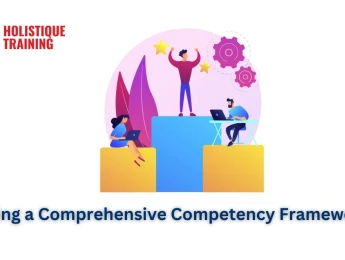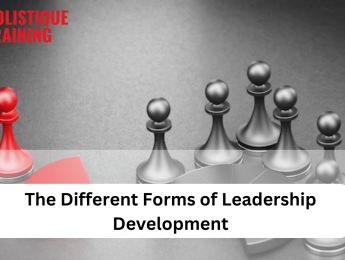- Table of Contents
- Introduction
- Understanding Strategic Planning Models
- Exploring Strategic Management Tools
- 1. SWOT Analysis
- 2. PEST Analysis
- 3. Porter's Five Forces Analysis
- 4. Scenario Planning
- 5. Key Performance Indicators (KPIs)
- The Benefits of Strategic Planning Tools
- a. Enhanced Decision-Making
- b. Improved Resource Allocation
- c. Risk Mitigation
- d. Goal Clarity and Focus
- e. Increased Adaptability
- f. Enhanced Stakeholder Communication
- g. Foster Innovation and Creativity
- Strategic Planning Models vs. Strategic Frameworks
- Strategic Planning Models:
- Strategic Frameworks:
- Is One Strategic Planning Model Better Than the Others?
- The Role of Technology in Strategic Planning
- Big Data Analytics
- Artificial Intelligence (AI) and Machine Learning
- Cloud-Based Collaboration Platforms
- Business Intelligence Tools
- Scenario Planning Software
- Competitive Intelligence Tools
- Supply Chain Optimisation Software
- Conclusion
Introduction
Organisations face numerous challenges and uncertainties in today's rapidly evolving business landscape. To navigate these complexities successfully, strategic planning becomes crucial. Strategic planning tools are invaluable resources that assist businesses in formulating effective strategies, identifying opportunities, mitigating risks, and achieving their long-term objectives. In this extensive blog post, we will delve into the world of strategic planning tools, exploring their significance, benefits, and different models that organisations can leverage to drive success.
Understanding Strategic Planning Models
A strategic planning model is a systematic approach that organisations employ to guide their decision-making processes. These models provide a structured framework for analysing internal and external factors, formulating strategies, setting goals, and monitoring progress. They serve as a roadmap to align organisational resources and actions with the desired outcomes. Strategic planning models offer a range of methodologies, such as the Balanced Scorecard, the McKinsey 7-S Framework, the Hoshin Kanri method, and more. Each model emphasises different aspects of the planning process and can be tailored to suit the organisation's needs.
Model | Emphasis |
Balanced Scorecard | Measuring and managing performance, aligning actions with strategic objectives. |
McKinsey 7-S Framework | Focusing on seven interrelated elements - strategy, structure, systems, shared values, style, staff, and skills. |
Hoshin Kanri Method | Aligning goals and actions throughout the organisation, fostering organisational-wide commitment to strategic objectives. |
Table 1: Brief overview of strategic planning models
Exploring Strategic Management Tools
Strategic management tools are a set of techniques and frameworks that assist in the strategic planning process. These tools help organisations gather data, analyse information, generate insights, and make informed decisions. Let's delve into some commonly used strategic management tools:
1. SWOT Analysis
Strengths, Weaknesses, Opportunities, Threats (SWOT) analysis is one of the foundational pillars of strategic planning. It entails an in-depth examination of internal strengths and weaknesses juxtaposed against external opportunities and threats. Organisations meticulously dissect their internal processes, human resources, financial health, and technological prowess to identify strengths and weaknesses. Simultaneously, they scan the external environment, analysing market trends, competition, regulatory factors, and emerging technologies to unearth opportunities and anticipate threats.
The brilliance of SWOT analysis lies in its ability to distil complex data into actionable insights. By identifying core competencies and potential pitfalls, organisations can craft strategies that leverage their strengths, shore up weaknesses, capitalise on opportunities, and prepare contingencies for potential threats. This systematic approach guides decision-makers, ensuring that strategies align seamlessly with the organisation's inherent capabilities and the external landscape.
2. PEST Analysis
Political, Economic, Social, and Technological (PEST) analysis offers a panoramic view of the macro-environmental factors influencing business operations. Political factors encompass government policies, stability, and potential impact on businesses. Economic factors include economic growth, inflation rates, and consumer spending patterns. Social factors explore societal attitudes, lifestyle changes, and demographics, while technological factors scrutinise innovations, automation, and digital advancements.
The amalgamation of these factors paints a vivid picture of the external forces at play. By understanding the broader context, organisations can proactively adapt their strategies. For instance, a change in political climate might necessitate policy-oriented adjustments, while rapid technological advancements could spur innovation initiatives. PEST analysis acts as a strategic compass, guiding organisations towards opportunities that align with the prevailing political, economic, social, and technological landscapes.
3. Porter's Five Forces Analysis
Porter's Five Forces analysis, conceived by renowned strategist Michael Porter, offers a granular examination of industry dynamics. This model dissects the competitive forces within an industry, revealing the interplay between existing competitors, potential new entrants, suppliers, buyers, and substitute products or services. Each force is meticulously evaluated to gauge its intensity and impact on the organisation's competitive position.
By understanding these forces, organisations can identify strategic positions within their industry. A low supplier power might present opportunities for cost efficiencies, while high buyer power could drive customer-centric strategies. Recognising threats from new entrants or substitute products allows organisations to fortify their market presence. Porter's Five Forces analysis acts as a strategic sieve, separating lucrative opportunities from potential pitfalls, enabling organisations to craft strategies that bolster their market standing.
4. Scenario Planning
Scenario planning is a dynamic tool that empowers organisations to prepare for various possible futures. Unlike traditional forecasting, which relies on extrapolating past trends, scenario planning explores multiple narratives that diverge from current trajectories. It involves envisioning various scenarios – optimistic, pessimistic, and everything in between – each grounded in different assumptions and drivers.
This approach allows organisations to be prepared for uncertainties. By considering multiple scenarios, businesses can strategise in a way that hedges against unforeseen events. For instance, in the face of economic volatility, organisations can develop resilient strategies across various scenarios, ensuring adaptability in unpredictable situations.
5. Key Performance Indicators (KPIs)
Key Performance Indicators (KPIs) act as compass points, guiding organisations towards their strategic objectives. These are quantifiable metrics that measure various aspects of organisational performance. KPIs can be financial, operational, customer-centric, or related to internal processes. Organisations gain real-time insights into their progress by defining and regularly tracking KPIs.
KPIs serve multiple purposes in strategic management. They provide clear benchmarks for success, enabling organisations to evaluate their performance against predetermined goals. Moreover, KPIs facilitate course corrections. If a particular indicator deviates from the desired target, organisations can investigate underlying causes and implement corrective actions promptly, ensuring that the strategic plan stays on course.
In the realm of strategic planning, these tools serve as invaluable allies, offering organisations the ability to dissect complexities, unveil opportunities, and fortify against threats. As businesses evolve in an increasingly dynamic environment, the adept use of these strategic management tools becomes not just an advantage, but a necessity. By embracing the insights these tools provide, organisations can craft strategies that are not only resilient but also visionary, paving the way for sustained growth and innovation in the ever-changing world of business.
The Benefits of Strategic Planning Tools
Strategic planning tools offer several key benefits to organisations. Let's explore some of the significant advantages they provide:
a. Enhanced Decision-Making
In the realm of strategic planning, informed decisions are the linchpin of success. Strategic planning tools, with their structured methodologies and analytical rigour, provide a systematic approach to assessing the internal and external environment. By integrating data-driven insights, organisations can make decisions based on a thorough understanding of the factors at play. This systematic approach minimises biases, ensuring that choices are aligned with the overarching goals of the organisation. In essence, strategic planning tools act as decision-making compasses, guiding organisations away from the pitfalls of impulsive decisions and towards the realm of well-informed, strategic choices.
b. Improved Resource Allocation
Resource allocation, a critical facet of strategic management, finds its optimisation through strategic planning tools. By meticulously analysing organisational strengths, weaknesses, opportunities, and threats, these tools assist in identifying key priorities. This focus enables organisations to allocate resources effectively, ensuring that every investment yields maximum returns. Whether it's financial resources, human capital, or technological assets, strategic planning tools facilitate their optimal utilisation. By aligning resources with strategic objectives, organisations can streamline their operations, reduce waste, and achieve greater efficiency, thereby enhancing overall productivity and competitiveness.
c. Risk Mitigation
In the volatile landscape of business, risks lurk around every corner. Strategic planning tools act as a shield, enabling organisations to identify potential risks and challenges well in advance. Through meticulous analysis and scenario planning, these tools facilitate the development of contingency plans. Organisations can prepare for unforeseen circumstances by implementing proactive measures to mitigate potential disruptions. Risk factors are continuously monitored, enabling organisations to respond swiftly and effectively. By being prepared, organisations can navigate challenges with resilience, ensuring that the strategic journey remains unhindered despite adversity.
d. Goal Clarity and Focus
Clarity of purpose is the bedrock upon which successful organisations are built. Strategic planning tools are pivotal in setting clear, measurable goals and objectives. Through these tools, organisations can precisely define their strategic intent, ensuring that every stakeholder understands the path ahead. Well-defined targets and performance indicators provide a sense of purpose and focus to employees and stakeholders alike. This clarity fosters alignment across the organisation, inspiring collaborative efforts. Every team member understands their role in the larger strategic narrative, leading to cohesive, synergised efforts toward shared objectives.
e. Increased Adaptability
Adaptability is the cornerstone of survival in the dynamic business arena. Strategic planning tools empower organisations to be agile and responsive. Organisations can identify emerging opportunities and challenges by continuously monitoring the external environment and conducting regular strategic assessments. These tools facilitate the development of agile strategies that can swiftly adapt to changing market conditions, technological advancements, and customer demands. The ability to pivot strategically enables organisations to capitalise on nascent opportunities, address evolving customer needs, and stay ahead of the competition.
f. Enhanced Stakeholder Communication
Transparent communication with stakeholders is fundamental for organisational credibility and trust. Strategic planning tools provide a structured framework for articulating organisational objectives, strategies, and progress. When stakeholders, whether they are employees, investors, or customers, understand the strategic direction, they are more likely to rally behind the organisation. Clear communication fosters confidence and a sense of security among stakeholders, ensuring they remain committed to the organisation's mission. This enhanced communication bridges gaps align expectations and builds a strong, supportive ecosystem around the organisation.
g. Foster Innovation and Creativity
When utilised effectively, strategic planning tools encourage a culture of innovation and creativity within organisations. These tools spark innovative thinking by promoting systematic analysis of market trends, customer behaviours, and technological advancements. They provide a structured approach to brainstorming sessions, enabling teams to explore unconventional ideas and perspectives. As a result, organisations can develop innovative products, services, and business models that resonate with the market. This innovation-driven approach enhances competitiveness and positions the organisation as a leader in the industry, fostering long-term sustainability.
Strategic Planning Models vs. Strategic Frameworks
In the realm of strategic management, the terms “strategic planning models” and “strategic frameworks” are often used interchangeably, yet they represent distinct approaches. Understanding their nuances is crucial for organisations aiming to craft effective strategies.
Strategic Planning Models:
Strategic planning models are systematic methodologies that organisations employ to guide their decision-making processes. They offer structured frameworks for analysing internal and external factors, formulating strategies, setting goals, and monitoring progress. They follow a step-by-step approach, emphasising analysis, formulation, implementation, and evaluation. Strategic planning models serve as comprehensive roadmaps, ensuring that organisations traverse the strategic landscape precisely.
Strategic Frameworks:
Strategic frameworks, on the other hand, are conceptual tools that provide a high-level view of an organisation's competitive position. They offer a holistic perspective, guiding strategic decision-making without delving into the exhaustive details of planning models. These frameworks assess an organisation's strengths and weaknesses, identify areas of improvement, and guide the creation of sustainable competitive advantage. While less prescriptive than planning models, they offer strategic direction, acting as compasses for organisational strategy.
Is One Strategic Planning Model Better Than the Others?
The effectiveness of a strategic planning model depends on various factors, including the organisation's size, industry, objectives, and internal capabilities. Each strategic planning model offers unique advantages and focuses on different aspects of the planning process. For example, the Balanced Scorecard emphasises measuring and managing performance, while Hoshin Kanri emphasises aligning goals and actions throughout the organisation. Organisations must select a model that aligns with their specific needs and goals. Organisations can also customise and combine different models to create a tailored approach that suits their requirements. By leveraging the strengths of different models, organisations can benefit from a holistic strategic planning process that addresses their unique challenges and maximises their chances of success.
The Role of Technology in Strategic Planning
Technology has become the cornerstone of strategic planning in the digital age, reshaping how organisations perceive, analyse, and respond to market dynamics. Integrating advanced technological tools has revolutionised strategic planning processes, enabling businesses to gain unprecedented insights, enhance decision-making, and secure a competitive advantage. Here’s a deep dive into the pivotal role technology plays in shaping strategic landscapes:
Big Data Analytics
Big Data analytics is a transformative force, providing organisations with the ability to process vast datasets in real time. By leveraging complex algorithms, businesses can extract meaningful patterns and trends from previously deemed impossible data sets. Strategic planning means comprehensive market analysis, precise consumer behaviour insights, and accurate demand forecasting. With this knowledge, organisations can make data-driven decisions, identify emerging opportunities, and anticipate market shifts with unparalleled accuracy.
Artificial Intelligence (AI) and Machine Learning
AI and machine learning algorithms have revolutionised predictive analytics, enabling organisations to forecast market trends, consumer preferences, and competitive movements. These technologies analyse historical data to identify patterns and make predictions, allowing businesses to anticipate customer demands and stay ahead of market fluctuations. Predictive insights AI provides empower strategic planners to proactively adjust their strategies, ensuring agility in response to changing market dynamics.
Cloud-Based Collaboration Platforms
Cloud-based collaboration platforms have transformed teamwork, fostering seamless communication and collaboration among geographically dispersed teams. In the context of strategic planning, these platforms facilitate real-time collaboration, allowing stakeholders to work together on strategic initiatives, share insights, and provide feedback instantaneously. Enhanced collaboration ensures that strategic plans are comprehensive, incorporating diverse perspectives and expertise, leading to well-rounded, adaptable strategies.
Business Intelligence Tools
Business Intelligence (BI) tools offer intuitive interfaces to visualise complex data sets. Through interactive dashboards and reports, strategic planners can monitor key performance indicators (KPIs) in real time. This real-time data-driven decision support system empowers organisations to track the progress of strategic initiatives, identify bottlenecks, and assess the impact of implemented strategies. BI tools provide actionable insights, allowing organisations to swiftly make timely decisions, adjust strategies, and capitalise on emerging opportunities.
Scenario Planning Software
Scenario planning software leverages simulations and modelling techniques to explore various future scenarios. By inputting different variables and assumptions, organisations can assess the potential outcomes of different strategic decisions. This technology enables strategic planners to prepare for multiple futures, evaluating the risks and rewards associated with each scenario. In a rapidly changing market, scenario planning software equips organisations with the foresight to make informed decisions, ensuring resilience in the face of uncertainties.
Competitive Intelligence Tools
Competitive intelligence tools enable organisations to monitor competitors’ activities, market positioning, and customer feedback. Businesses can analyse this data to identify competitive strengths and weaknesses, allowing for informed benchmarking and strategic positioning. These tools empower organisations to respond to competitive threats proactively, capitalise on competitors' vulnerabilities, and fine-tune their strategies to gain a competitive edge.
Supply Chain Optimisation Software
In a globalised market, supply chain optimisation is integral to strategic success. Advanced software solutions analyse supply chain data, identifying inefficiencies, bottlenecks, and areas for improvement. By optimising the supply chain, organisations enhance operational efficiency, reduce costs, and ensure timely delivery of products and services. Strategic planners can align their supply chain strategies with market demands, enabling the organisation to respond swiftly to customer needs and market fluctuations.
Strategic planners must embrace these technologies and cultivate a culture of innovation within their organisations. The synergy between human expertise and technological prowess is the key to unlocking strategic potential. As technology continues to evolve, organisations that adapt, innovate, and integrate these advancements into their strategic planning processes will survive and thrive in the ever-changing business landscape.
Conclusion
Powerful strategic planning tools are pivotal in guiding organisations towards long-term success in today's complex business environment. By leveraging strategic planning models and management tools such as SWOT analysis, PEST analysis, and Porter's Five Forces analysis, organisations gain valuable insights, make informed decisions, and adapt to evolving market dynamics. While no single strategic planning model is universally superior, organisations must carefully assess their specific needs and goals to select an appropriate model or a combination of models. Using strategic planning tools, organisations can navigate uncertainties, seize opportunities, and achieve sustainable growth in an increasingly competitive landscape. The continuous application of these tools enables organisations to remain agile, innovative, and well-positioned for long-term success.
And if you're eager to master the art of wielding these powerful tools to ensure unwavering business focus, look no further! Our course, ‘Powerful Strategic Tools to Ensure Business Focus,’ is your gateway to becoming a strategic virtuoso. Let us guide you towards the path of success, where agility, innovation, and long-term prosperity are within your reach. Don't miss this opportunity to sharpen your strategic acumen; enrol in our course today and chart a course to a brighter future for your organisation!
























